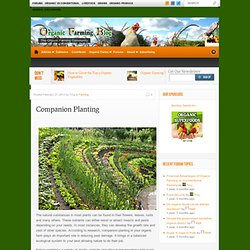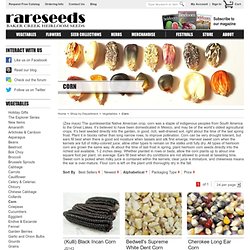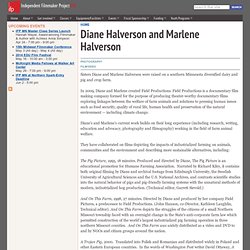

September 16 – 22, 2013 Kaw Valley Almanac. A Video Asks: Can You Taste the GMO? Think you could taste the toxic ingredients in your food?

A group aimed to find out. Why? Because today, we have two types of corn in our food supply: one is regulated by the EPA as a pesticide, as seen here, the other isn’t. So a group tested that question, “Can you taste the difference?” With dozens of people on the street in Northampton, Massachusetts . At least not yet. So in a video that is similar to the Coke and Pepsi challenge or any taste test you might have seen, this group takes the same approach with corn that has been genetically engineered and is now regulated by the EPA as a pesticide. Organic Farming Blog. The natural substances in most plants can be found in their flowers, leaves, roots and many others.

These nutrients can either resist or attract insects and pests depending on your needs. In most instances, they can develop the growth rate and zest of other species. According to research, companion planting in your organic farm plays an important role in reducing pest damage. It brings in a balanced ecological system to your land allowing nature to do their job. Nature combines a variety of plants, animals and other living organisms into every ecosystem. What is Companion Planting? Companion planting is a form of polyculture that involves planting of a variety of crops in certain land area that is in proximity with the other.
Ancient Chompers Were Healthier Than Ours : Shots - Health News. Prehistoric humans didn't have toothbrushes.

They didn't have floss or toothpaste, and they certainly didn't have Listerine. Yet somehow, their mouths were a lot healthier than ours are today. "Hunter-gatherers had really good teeth," says Alan Cooper, director of the Australian Centre for Ancient DNA. "[But] as soon as you get to farming populations, you see this massive change. Huge amounts of gum disease. And thousands of years later, we're still waging, and often losing, our war against oral disease. Our changing diets are largely to blame. In a study published in the latest Nature Genetics, Cooper and his research team looked at calcified plaque on ancient teeth from 34 prehistoric human skeletons. Not all oral bacteria are bad.
"What you've really created is an ecosystem which is very low in diversity and full of opportunistic pathogens that have jumped in to utilize the resources which are now free," Cooper says. Paleo Diet In A Nutshell (Infographic) Seminar in Ethnography and Fieldwork. Anthropology. Baker Creek Heirloom Seeds. (Zea mays) The quintessential Native American crop, corn was a staple of indigenous peoples from South America to the Great Lakes.

It’s believed to have been domesticated in Mexico, and may be of the world’s oldest agricultural crops. It’s best seeded directly into the garden, in good, rich, well-drained soil, right about the time of the last spring frost. Plant it in blocks rather than long narrow rows, to improve pollination. Corn can be very drought tolerant, but ears fill best when there is good soil moisture when tassels and silk first emerge. Harvest sweet corn when the kernels are full of milky-colored juice; allow other types to remain on the stalks until fully dry. Information About Organic Heirloom Tomato Seeds and Heirloom Tomatoes from TomatoFest. Diane Halverson and Marlene Halverson. Photography Film/video Sisters Diane and Marlene Halverson were raised on a southern Minnesota diversified dairy and pig and crop farm.

In 2009, Diane and Marlene created Field Productions. Field Productions is a documentary film making company formed for the purpose of producing theater-worthy documentary films exploring linkages between the welfare of farm animals and solutions to pressing human issues such as food security, quality of rural life, human health and preservation of the natural environment -- including climate change. Diane’s and Marlene’s current work builds on their long experience (including research, writing, education and advocacy, photography and filmography) working in the field of farm animal welfare.
They have collaborated on films depicting the impacts of industrialized farming on animals, communities and the environment and describing more sustainable alternatives, including: The Pig Picture, 1995, 18 minutes. Dessert Pizza Recipe. Wojapi. TANKASTIK-2T. Turkey Red, Growing History - Abstract. Music.